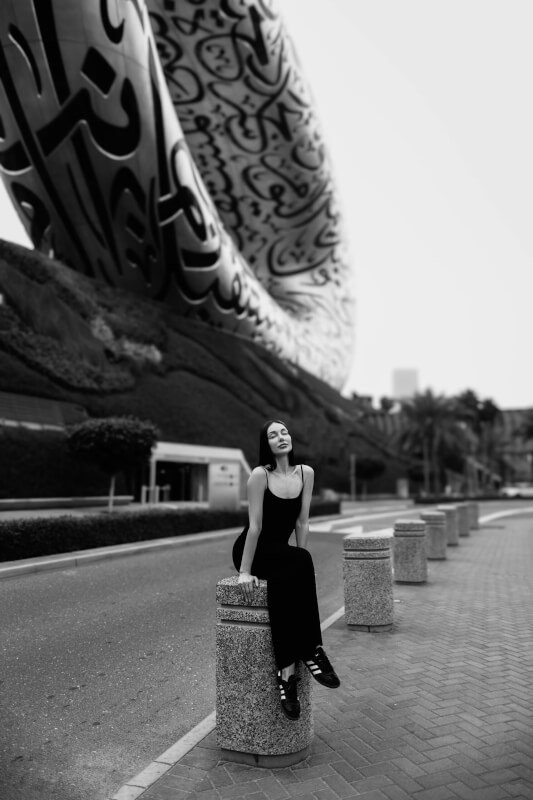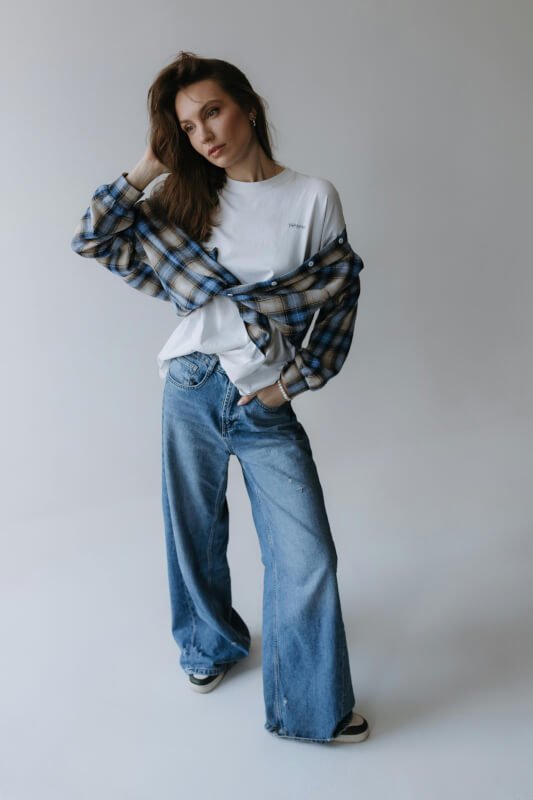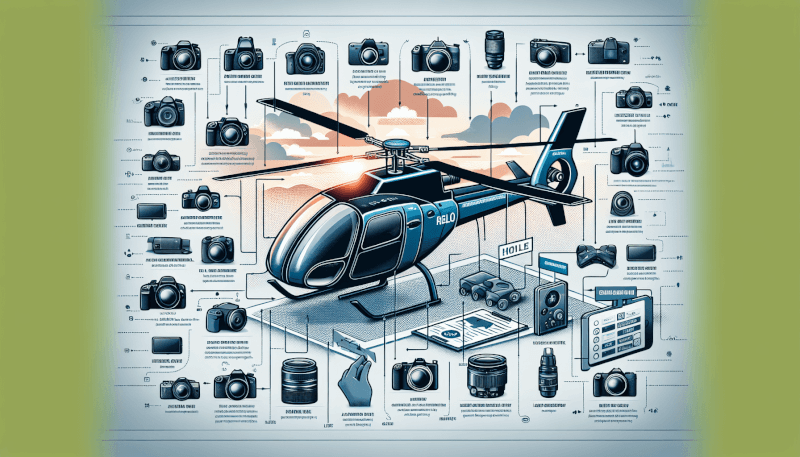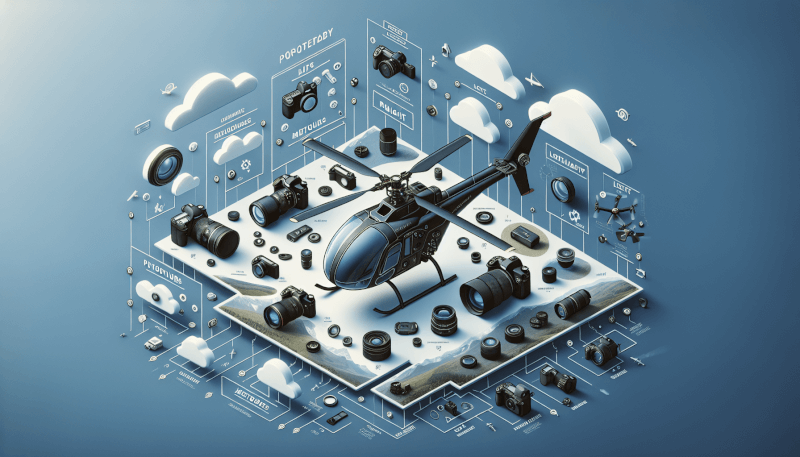Are you ready to take your aerial photography skills to new heights? If so, it’s essential to choose the right camera for your RC helicopter. With advancements in technology, there are numerous options available, each with its own set of features and capabilities. The perfect camera can elevate your photographs and capture stunning images from the sky. In this article, we will explore the important factors to consider when choosing a camera, providing you with the knowledge you need to make the best decision for your aerial photography adventures.
1. Understanding the Basics of Aerial Photography
What is aerial photography?
Aerial photography is the practice of capturing photographs from an elevated position, typically using a camera mounted on an airborne device such as a remote-controlled helicopter, also known as an RC heli. This technique allows photographers to capture unique and captivating images from an aerial perspective, presenting a different viewpoint and showcasing stunning aerial landscapes.
Advantages of using an RC heli for aerial photography
Using an RC heli for aerial photography offers several advantages. Firstly, it provides a cost-effective solution compared to traditional methods, such as hiring helicopters or drones. RC helis are easily maneuverable and allow photographers to access a wider range of locations, including areas difficult to reach by foot or conventional means.
Furthermore, the versatility of an RC heli allows photographers to precisely control the positioning and perspective of their shots. This level of control enables capturing images from various angles, heights, and distances, resulting in visually appealing and dynamic photographs.
Different types of aerial photography
Aerial photography encompasses various types, each with its own specific focus and purpose. Some popular types include:
- Landscape photography: Capturing sweeping vistas of mountains, coastlines, forests, and other natural landscapes.
- Architectural photography: Showcasing buildings, structures, and urban environments from above.
- Event photography: Documenting outdoor events, such as concerts and sports competitions, from an aerial viewpoint.
- Surveying and mapping: Utilizing aerial photography for mapping, land surveying, or environmental analysis.
- Real estate photography: Providing unique perspectives of properties for sale or rent, highlighting their features and surroundings.
Key factors to consider for aerial photography
Before embarking on your aerial photography journey, several key factors need to be carefully considered. These factors can significantly influence the outcome of your photographs and the overall success of your aerial photography experience. Some crucial considerations include:
- Weather conditions: Ensure optimal weather conditions for capturing clear and crisp images without interference from elements such as rain, fog, or excessive winds.
- Legal and safety regulations: Familiarize yourself with the local regulations regarding the use of RC helis for aerial photography, ensuring compliance and the safety of yourself and others.
- Camera stability: Investing in equipment such as gimbals and stabilizers can greatly enhance the stability of your camera during flight, resulting in sharper and more professional-looking photographs.
- Planning and composition: Take the time to plan your aerial photography sessions, considering the composition, framing, and subject matter of your photographs. This will help you capture the best shots and tell a compelling visual story.
- Practice and patience: Aerial photography, like any other form of photography, requires practice and patience. Take the time to experiment with different settings and techniques to improve your skills and achieve the desired results.
2. Importance of Choosing the Right Camera
How the camera influences the quality of aerial photographs
The camera is an essential element that directly impacts the quality of aerial photographs. The camera’s specifications, capabilities, and features play a significant role in determining the level of detail, colors, and overall image quality you can achieve. Therefore, selecting the right camera for aerial photography is crucial to ensure exceptional results.
Factors to consider when choosing a camera for aerial photography
When choosing a camera for aerial photography, it’s important to consider several factors to ensure it meets your specific needs and requirements. Some key factors to consider include:
- Resolution: The camera’s resolution determines the level of detail in your photographs. Higher resolution cameras offer more pixels, resulting in sharper and more detailed images.
- Sensor size: The size of the camera’s sensor affects its light-gathering capabilities and low-light performance. Larger sensors generally produce better image quality, especially in challenging lighting conditions.
- ISO range: The camera’s ISO range determines its sensitivity to light. A wide ISO range allows for flexibility in different lighting situations, ensuring you can capture well-exposed images in various environments.
- Shutter speed: A fast shutter speed is essential for capturing sharp images, especially when photographing moving subjects or in windy conditions. Look for a camera with a fast shutter speed capability.
- Aperture: The camera’s aperture affects depth of field and the amount of light entering the lens. A wide aperture (low f-number) allows for shallow depth of field, ideal for blurring backgrounds and emphasizing the main subject.
- Lens compatibility: Consider the availability and compatibility of lenses for the camera system you choose. Different lenses offer various focal lengths and characteristics, allowing you to capture different types of shots.
- Image stabilization: A camera with built-in image stabilization can help minimize camera shake and vibrations during flight, resulting in sharper images. Look for cameras with in-body or lens-based stabilization.
- Weight and size: The size and weight of the camera can impact the performance and stability of your RC heli. Consider the weight restrictions and payload capacity of your RC heli when selecting a camera.

3. Camera Specifications for Aerial Photography
Resolution
The resolution of a camera refers to the number of pixels it can capture in an image. Higher resolution cameras produce images with more detail, allowing for larger print sizes and greater flexibility in post-processing. For aerial photography, a camera with a resolution of at least 16 megapixels is recommended.
Sensor size
The size of a camera’s sensor determines its light-gathering capabilities and low-light performance. A larger sensor typically results in better image quality, especially in challenging lighting conditions. For aerial photography, cameras with APS-C or full-frame sensors are preferred.
ISO range
The ISO range of a camera indicates its sensitivity to light. A wide ISO range allows for flexibility in different lighting situations, ensuring well-exposed images in varying environments. Look for a camera with a native ISO range of at least 100-25600 or higher for optimal results in aerial photography.
Shutter speed
A fast shutter speed is crucial for capturing sharp images, especially when photographing moving subjects or in windy conditions. Look for a camera with a high maximum shutter speed, preferably 1/4000th of a second or faster, to freeze motion effectively during flight.
Aperture
The aperture of a camera lens affects depth of field and the amount of light entering the camera. A wide aperture (low f-number) allows for a shallow depth of field, blurring the background and emphasizing the main subject. Look for lenses with wide maximum apertures, such as f/2.8 or wider, for creative flexibility in aerial photography.
Lens compatibility
Consider the availability and compatibility of lenses for the camera system you choose. Different lenses offer various focal lengths and characteristics, allowing you to capture different types of shots. Look for camera systems with a wide selection of lenses suitable for aerial photography.
Image stabilization
A camera with built-in image stabilization can help minimize camera shake and vibrations during flight, resulting in sharper and more professional-looking images. Look for cameras with in-body or lens-based image stabilization for optimal results in aerial photography.
Weight and size
The weight and size of the camera are important considerations when it comes to aerial photography. Ensure that the camera you choose is lightweight enough to not exceed the payload capacity of your RC heli. Additionally, consider the overall size and dimensions of the camera to ensure it is compatible and can be easily mounted on your RC heli.
4. Types of Cameras Suitable for Aerial Photography
DSLR cameras
DSLR (Digital Single-Lens Reflex) cameras are a popular choice for aerial photography due to their versatility, image quality, and interchangeable lens system. They offer a wide range of lenses, manual controls, and advanced features, making them suitable for capturing high-quality aerial photographs.
Mirrorless cameras
Mirrorless cameras are becoming increasingly popular for aerial photography due to their compact size, lightweight nature, and excellent image quality. They offer interchangeable lenses, advanced autofocus systems, and high-resolution electronic viewfinders, making them a viable option for capturing stunning aerial photographs.
Action cameras
Action cameras, such as GoPro, are compact and designed for capturing fast-paced action footage, making them a suitable option for aerial photography. They are lightweight, rugged, and often come with built-in image stabilization, making them ideal for use with RC helis.
Compact cameras
Compact cameras, also known as point-and-shoot cameras, are lightweight, portable, and easy to use. While they may not offer the same level of image quality and manual control as DSLRs or mirrorless cameras, they can still produce impressive aerial photographs, especially in well-lit environments.

5. Pros and Cons of Different Camera Types
Advantages and disadvantages of DSLR cameras
- Advantages:
- Excellent image quality
- Wide range of lenses and accessories available
- Manual control over settings
- Versatile for various types of photography
- Disadvantages:
- Larger and bulkier compared to mirrorless and compact cameras
- Higher cost, especially when adding lenses and accessories
- May require more experience and technical knowledge for optimal use
Advantages and disadvantages of mirrorless cameras
- Advantages:
- Excellent image quality
- Compact and lightweight
- Wide range of lenses available
- Advanced autofocus systems
- Disadvantages:
- Higher cost compared to compact cameras
- Limited lens selection compared to DSLRs
- Battery life may be shorter due to electronic viewfinders
Advantages and disadvantages of action cameras
- Advantages:
- Lightweight and compact
- Rugged and durable
- Built-in image stabilization
- Ideal for capturing fast-paced action
- Disadvantages:
- Limited manual control over settings
- Smaller sensors compared to DSLRs and mirrorless cameras
- Limited lens options
Advantages and disadvantages of compact cameras
- Advantages:
- Compact and portable
- Easy to use
- Cost-effective option
- Decent image quality in well-lit environments
- Disadvantages:
- Limited manual control over settings
- Smaller sensors and lower image quality compared to DSLRs and mirrorless cameras
- Limited lens options and accessories
6. Factors to Consider When Choosing Camera Type
Intended use and purpose
Consider your intended use and purpose for aerial photography. If you are looking to capture high-quality images for professional purposes or print enlargements, a DSLR or mirrorless camera may be the best choice. On the other hand, if you are looking for a lightweight and portable option for recreational use or social media sharing, an action camera or compact camera could be more suitable.
Budget
Set a budget for your aerial photography equipment and consider the cost of the camera, lenses, and accessories. DSLR and mirrorless cameras tend to be more expensive, especially when multiple lenses are included. Action cameras and compact cameras offer more affordable options.
Portability
Consider the portability and weight of the camera. If you plan to travel extensively or hike to remote locations, a lightweight and compact camera would be a practical choice. DSLR cameras can be bulkier and heavier to carry, especially when combined with additional lenses.
Image quality requirements
Evaluate your image quality requirements based on the intended use of your aerial photographs. If you need highly detailed and professional-grade images, DSLR or mirrorless cameras with larger sensors and higher resolution would be the best choice. Action cameras and compact cameras can still produce pleasing results, especially for web sharing and smaller prints.
Skill level and experience
Consider your skill level and experience with photography. DSLR and mirrorless cameras offer more advanced features and manual control, which might be overwhelming for beginners. Action cameras and compact cameras, on the other hand, are generally more user-friendly and easier to operate.

7. Additional Features for Aerial Photography
GPS capabilities
Having GPS capabilities in your camera can be beneficial for aerial photography as it allows you to geotag your images, providing valuable location data for future reference or adding to map applications. This feature can help you remember specific shooting locations and assist in organizing your photographs.
Wireless connectivity
Wireless connectivity features, such as Wi-Fi or Bluetooth, allow you to wirelessly transfer your aerial photographs to a computer or mobile device for editing or sharing. This can be especially convenient when working remotely or when you want to quickly share your images on social media platforms.
RAW file support
Having RAW file support in your camera allows for greater flexibility and control during post-processing. RAW files contain uncompressed data captured directly from the camera’s sensor, providing more latitude for adjustments in exposure, white balance, and other settings without degrading image quality.
Battery life
Consider the battery life of the camera, especially for aerial photography sessions that may last extended periods. Look for cameras with long-lasting batteries or purchase additional batteries to ensure uninterrupted shooting and longer flight times.
Remote control compatibility
Ensure that your chosen camera is compatible with remote control devices, such as smartphone apps or dedicated remote controls. Remote control compatibility allows you to trigger the camera’s shutter remotely, enabling easy capture of aerial photographs while piloting your RC heli.
8. Accessories for Aerial Photography
Gimbals for stabilization
A gimbal is a device designed to stabilize the camera during flight, minimizing unwanted movements and vibrations. Investing in a quality gimbal can greatly enhance the stability and smoothness of your aerial photographs, resulting in sharper and more professional-looking images.
Filters for enhancing image quality
Filters, such as neutral density (ND) filters or polarizing filters, can be used to enhance the image quality and creativity of your aerial photographs. ND filters can control the amount of light entering the lens, allowing for longer exposure times or wider apertures. Polarizing filters can reduce glare and enhance colors, making them ideal for capturing vibrant aerial landscapes.
Extra batteries and chargers
Having extra batteries and chargers is essential for extended aerial photography sessions. RC helis and cameras can quickly drain battery power, so having spares on hand ensures uninterrupted shooting and longer flight times. Additionally, consider investing in a portable external battery charger to recharge your batteries while on the go.
Storage solutions
Ensure you have adequate storage solutions for your aerial photographs. Invest in high-capacity memory cards or portable hard drives to safely store and transfer your images. Consider having a backup plan in case of data loss or camera malfunctions during flight.
Remote controls and transmitters
Depending on the features and capabilities of your RC heli, you may need additional remote control devices or transmitters to operate your camera and capture aerial photographs. Ensure compatibility and familiarity with the controls to maximize your shooting experience and capture the desired shots.

9. Research and Reviews
Online research and comparison
Before making a final decision on which camera to purchase, conduct thorough online research and comparisons. Explore various reputable websites, forums, and photography communities to gather information on different camera models, their specifications, performance, and user reviews. Take the time to compare prices, read customer feedback, and consider expert recommendations.
Reading reviews and user experiences
Reading reviews from both professional reviewers and fellow photographers who have used the cameras you are considering can provide valuable insights and help you make an informed decision. Pay attention to commonly mentioned pros and cons and consider how they align with your specific needs and preferences.
Seeking professional advice
If you are new to aerial photography or unsure about which camera to choose, consider seeking advice from professional photographers or instructors who specialize in aerial photography. They can provide guidance, share their experiences, and recommend suitable camera options based on your skill level, budget, and intended use.
10. Conclusion
Recap of important considerations
Choosing the right camera for aerial photography with your RC heli involves considering a range of factors such as camera type, specifications, intended use, budget, and your skill level. Understanding the basics of aerial photography, the advantages of using an RC heli, and the different types of aerial photography are essential for making an informed decision.
Final tips for choosing the right camera for aerial photography with your RC heli
- Evaluate your specific needs and requirements, considering factors such as image quality, portability, and budget.
- Research and compare different camera models, taking into account their specifications, features, and user reviews.
- Consider the availability and compatibility of lenses and accessories for your chosen camera system.
- Take into account the weight and size of the camera to ensure compatibility with your RC heli.
- Seek professional advice and learn from experienced aerial photographers for valuable insights and recommendations.
- Lastly, practice and experiment with your chosen camera to improve your skills and achieve stunning aerial photographs.



